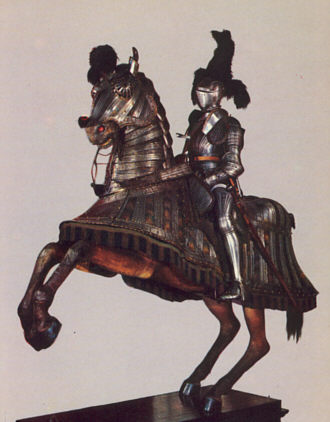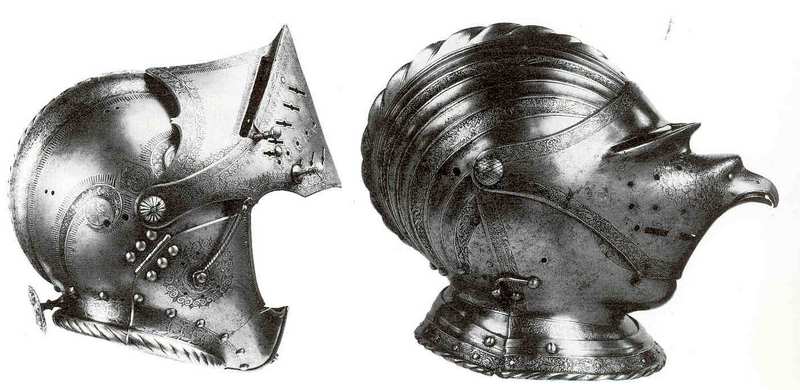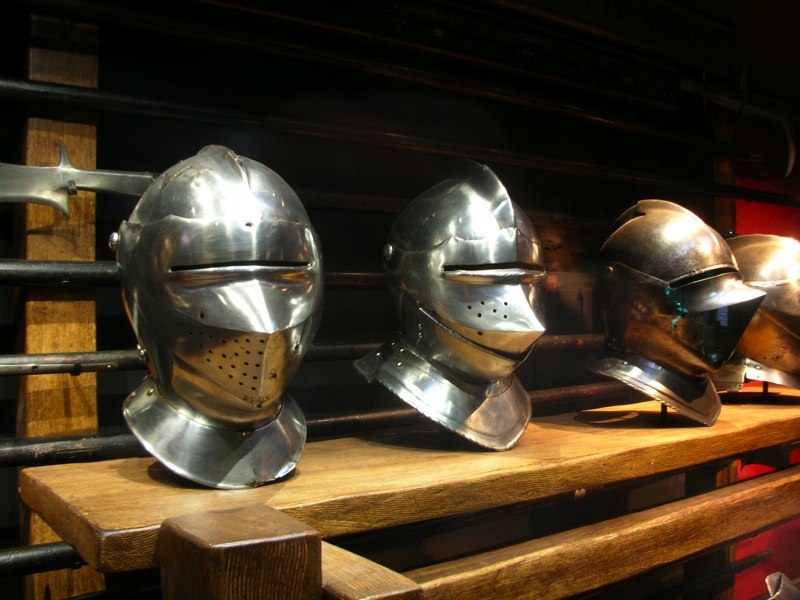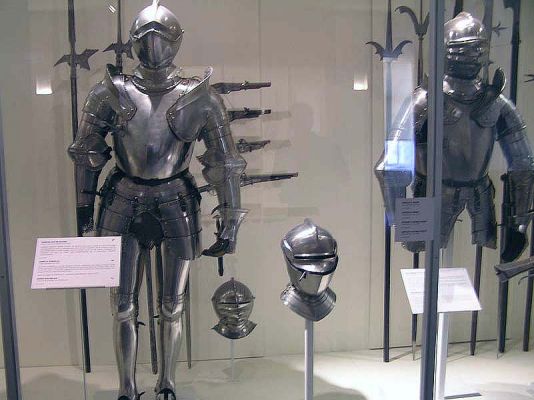Posts: 347 Location: Argentina
Mon 13 Aug, 2007 12:06 pm
Thanks Torsten
I have another question about those armour styles, Do you know if those non-fluted (French, Italian, etc...) armours were born to face the necesity of an armour wich could be made faster or something like that instead of only fashion? Because, despite being nice, fluting an armour can take a long time, and the smiths were always tampering and forging stronger armours.
Where Maximilian armours made for battle? Since when those other styles were manufactured? And how common non-fluted Maximilian armours were?
And finally, having seen some Maximilian style characteristics in Bayard´s armor and in the first armour i posted (Guessing that it is a 1520-1530 suit), just like the pauldron pattern, Why then another useful characteristics were almost dropped away in later XVI century suits, like those crest over the pauldrons(I think they are called haute piece, i don´t know, but they are in the posted armour)?
Well, really, i don´t know how practical those ¨crest¨ were for later XVI century suits, but they look awesome in earlier suits.
Thanks and sorry for the off-topic questions bombing. :p
 Attachment: 31.4 KB
Attachment: 31.4 KB







